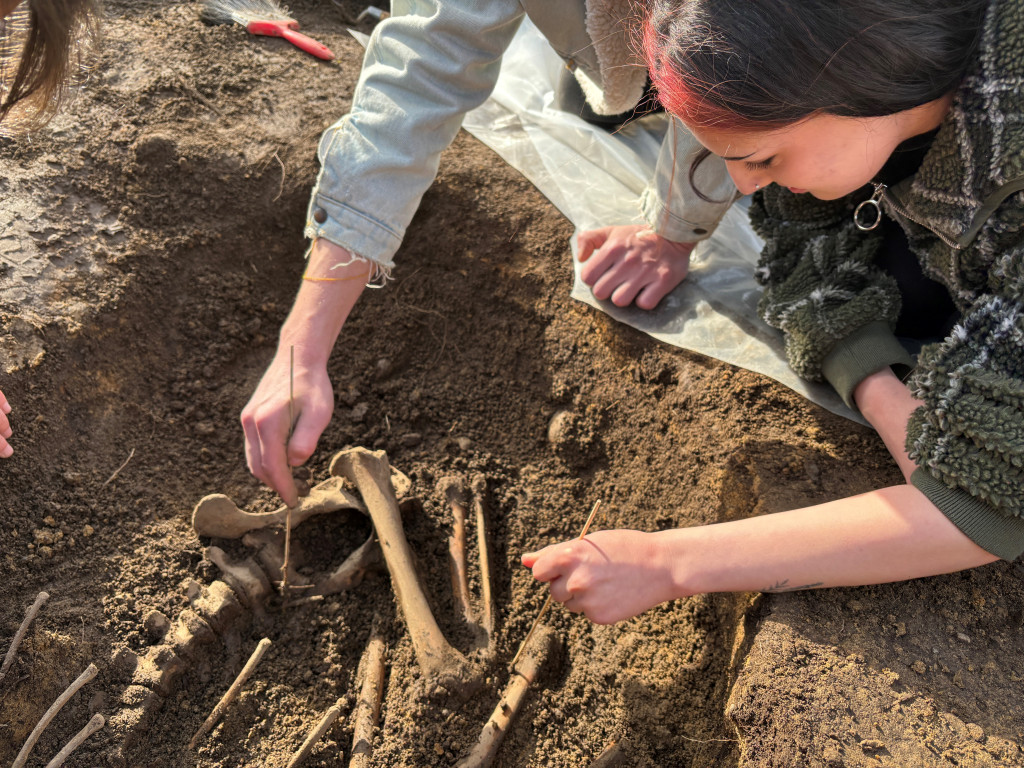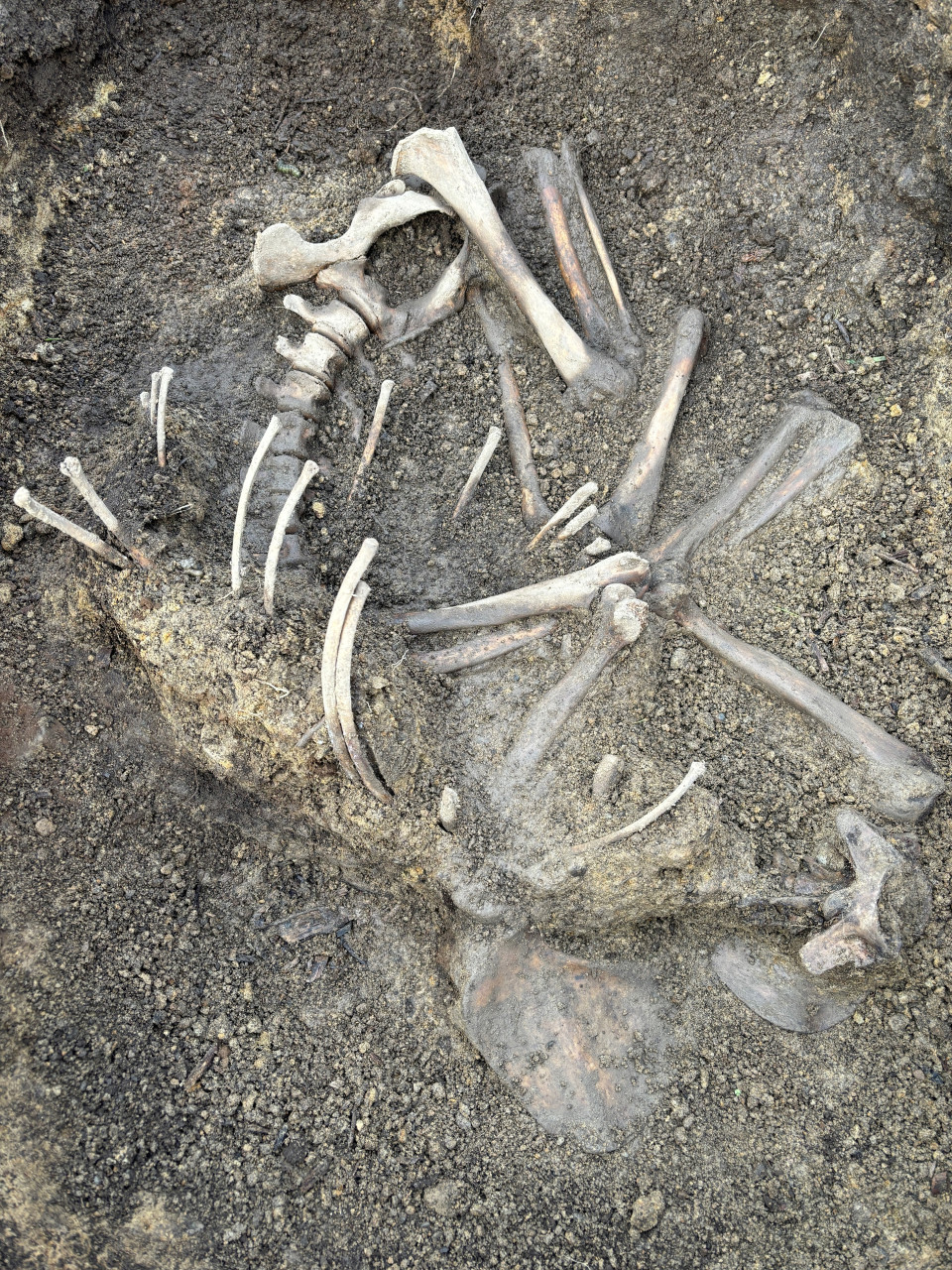Anthropology students at Camosun dug into something interesting when they got the opportunity to excavate the carcass of a black bear on campus before meticulously labelling the bones for the college’s comparative collection.

≥‘πœ±¨¡œ
Anthropology students tried a variety of tools including wooden BBQ skewers and paint brushes to carefully expose the bones of a buried black bear carcass.
Archaeology instructor Nicole Kilburn was able to offer students a unique hands-on learning session after an Indigenous colleague gifted the college a hunted black bear carcass minus head and paws that had been used for ceremonial purposes.
“I knew right away this could be a great teaching and learning opportunity. We were also able to model Indigenous ways of knowing and discuss protocols by showing respect in culturally appropriate ways.”
Nicole Kilburn, Archaeology Instructor
The bear carcass was buried in June 2021, where it reposed, waiting to become a novel teaching assistant. In 2022, the location was used by students to successfully detect anomalies beneath the surface using ground penetrating radar technology.
“In winter 2024, the time was right for archaeology students to learn some excavation techniques,” says Kilburn. “We got to use different types of screens as well as try a variety of tools including wooden BBQ skewers and paint brushes to carefully expose the bones.”
Once the bones were exposed, students learned how to draw plan view maps with point coordinates, collect elevation data, and take good photographs as part of documentation.
Instructors and students from the college’s Indigenous Studies program helped show appreciation for and honour the life and death of the bear through song as the remains of the bear continue to assist with further learning.
“Valuing and respecting Indigenous ways of knowing and being are key parts of teaching and learning, particularly as archaeologists grapple with the dark history and legacy of the discipline.”
Nicole Kilburn
Loading... Forensic anthropology instructor Dr. Katie Waterhouse led the work in lifting the bones for evaluation in forensics labs. Students learned recovery techniques as they bagged the bones to maintain as much context information as possible.
Back in the lab, forensic anthropology students cleaned the bones as they created an inventory for evaluation that helped with the reconstruction of the bear. After researching how to flat lay a quadruped, the class laid the bear out in zoo archaeology position and labelled the bones – the final step before the bones can be used as a comparative collection for faunal analysis.
Learn more about the Anthropology courses and Camosun’s Archaeological Field Assistant program.
Contact information
Rodney Porter
≥‘πœ±¨¡œ
